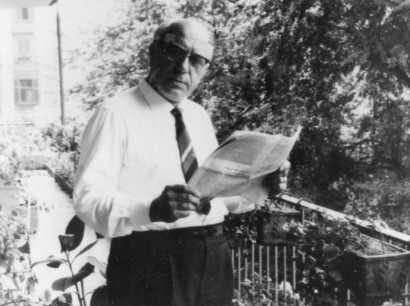MARIO BACCIOCCHI – Architect

(Fiorenzuola, 1902 – Milan, 1974)
Mario Bacciocchi stands out among the architects active in the early 1900s for his noteworthy contributions to the historical center area of Salsomaggiore, in the city of Parma and throughout northern Italy. His professional training began with a diploma as a building surveyor and the prestigious diploma of Professor of Architectural Drawing, which he obtained from the Royal Academy of Fine Arts of Milan, and which he integrated with a three month perfecting course he attended at school of Piero Portaluppi, a teacher of Architectural Composition at the Milan Polytechnic. Taking advantage of several opportunities to develop designs offered to him by entrepreneur Fonio, Bacciocchi strongly contributed to the improvement of the architectural and urban planning image of the spa town, bringing to it ideas and important practical achievements.
Among these we mention the most important ones: Villa Barilla (1925) on the hills sloping towards Tabiano, the remodeling enlargement of the Grand Hôtel et de Milan (1926), the facades of the Acqua Amelia factory (1927), the unfinished design for the Prato delle saline (salt pan meadow) (1926) and the Cinema-Teatro Nuovo (New Cinema Theater) (1934). He was responsible for the extension of the Grand Hôtel of Gardone Riviera, the urban design of the Niguarda district in Milan, the Kursaal-theater, restaurants and bathing establishments in Grado (Trieste), the seat of the Faculty of Agriculture at the Università Cattolica in Milan, the Metanopoli complex in Milan and the fixed and movable furnishings in the first Barilla offices and shops in Parma. With regard to the latter, that are unfortunately lost today, we have outlined an in-depth stylistic and constructive analysis in the chapter dedicated to the Barilla shops in this book.
Gianni Capelli
Bibliography
BONATTI BACCHINI Maurizia, “Mario Bacciocchi”, in Tra Liberty e Déco, Salsomaggiore. Parma, Cassa di Risparmio di Parma, 1986, pp. 136-144.